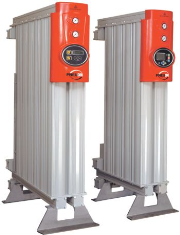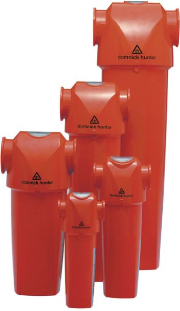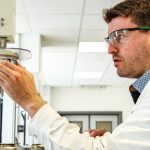 Parker Hannifin’s Richard Moore considers the precautions that engineers and safety officers need to take following the recently revised international air quality standards
Parker Hannifin’s Richard Moore considers the precautions that engineers and safety officers need to take following the recently revised international air quality standards
Since the introduction of the revised ISO 8573-1:2010 standard, industry is becoming increasingly aware of the changes implicit in the new compressed air quality standards. While not a law in itself, this ISO standard forms the basis on which worldwide best practice is founded and often forms the source of regulations that ensure companies can remain an internationally acceptable part of the global trading world.
With the aim of regulating the quality and purity of compressed air, the revised standard specifies contamination levels allowed for each quality class, including oil aerosols, water vapour, solid particles, micro-organisms and oil vapour.
Purchase and installation costs of new air purification equipment are high so, at first glance, one might think that the new standard will increase operating costs for many companies. However, while this may be the case in critical scientific or medical applications, for most manufacturers, the new standard can be met through a carefully managed review and, where appropriate revision of existing factory procedures.
Meeting the air quality specifications of ISO 8573-1:2010 can be achieved by improving system design, commissioning and operation, as well as by adopting a careful approach to the maintenance and monitoring of filtration and drying systems. Also important is the use of intelligent energy and quality monitoring devices and the need to make informed purchase decisions, based on capital versus entire life costs.
Ensuring compliance
Perhaps the most effective way of ensuring that air quality complies with ISO 8573-1:2010, is to treat the compressed air before it enters the distribution system, as well as treating it at critical usage points and applications. Purification equipment, filters and air dryers, should therefore be installed where the air is at the lowest possible temperature, such as downstream of after coolers and air receivers. Meanwhile, point of use purification equipment should be installed as close to the application as possible. Most critically, this ensures that contamination already in the distribution system is removed effectively.
On the other hand, for operations requiring aseptic processes, such as in high technology and food and beverage applications, it is crucial that a sterile gas filter is installed at the point of use, with this and other associated downstream process equipment being sterilised regularly. These sterile gas filters should be tested for efficiency on a regular basis.
 The technological challenge
The technological challenge
The latest generation of air dryers, such as Parker’s PNEUDRI MX heatless dryers, provides a simple solution for the provision of clean, dry compressed air. The latest models are electronically controlled compact systems, which feature a patented modular construction to allow for rapid system expansion as the air capacity needs of an industrial plant develop.
These products provide 100% standby drying capacity and, due to the small size and light weight of the aluminium formed towers, the latest heatless dryers take up a relatively small amount of floor space and are easy to install. Above all, these technologies deliver pressure dew-points in accordance with ISO 8573-1:2010 class 1, 2 or 3 for water vapour and, when combined with the latest range of compressed air filters, can achieve Air Quality Class 1.2.1 and 1.1.1.
In fact, the latest compressed air filters, such as Parker Domnick Hunter’s OIL-X EVOLUTION range, use aerospace technology to provide a combination of optimal flow paths and reduced system operating costs.
This design concept means that the performance of some filters is proven to meet and exceed the latest revision of ISO 8573-1:2010, with Parker’s filters being validated independently by the international approval authority, Lloyds Register.
Maintaining system efficiency
Once a purification technology has been specified and implemented, it is important that regular system maintenance is undertaken to ensure consistent air quality and compliance. In particular, this purification equipment must be serviced annually, as failure to do so invalidates performance guarantees, potentially resulting in a range of problems, including reduced production performance, degraded air quality and increased running costs.
Consistent quality
To meet the needs of the industry a range of strategies designed to maximise system efficiency and ensure consistent compliance with ISO 8573-1:2010, have been introduced by manufacturers.
For example Parker Domnick Hunter introduced its Air Quality Management Programme to provide an independent analysis of compressed air quality. This delivers a report presentation and recommendations of how to improve efficiency.
This scheme identifies and measures system pressure, system temperature, system dew-point, air flow, air quality test (CO2, water content, oil content and O2), ultrasonic air leakage detection and identification, systems’ particle count, energy consumption, cost calculation of the existing compressed air system, and compressed air system deficiencies.
A key part of such testing is cost efficiency. It is pointless overcleaning air because costs far outweigh benefits. The ISO standards, after all, do not exist to put companies out of business.
The key focus of any review, whether internal or involving outside authorities, is to ultimately achieve the right balance between air quality and energy savings. The aim of such activities is to present a realistic approach to ISO 8573 that will also deliver attainable targets cost effectively to improve profitability.



